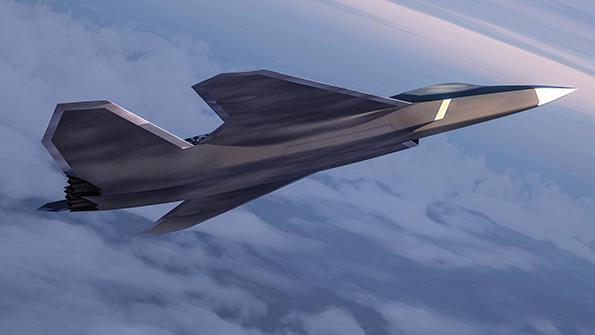
Europe’s two next-generation combat aircraft are headed down wildly divergent paths. In recent weeks, French and German dissatisfaction with the Future Combat Air System (FCAS/SCAF) program has threatened to boil over, mostly for reasons I outlined two years ago (AW&ST March 25-April 7, 2019, p. 10). By contrast, the UK’s Tempest program has moved forward under strong, centralized UK leadership, with Italy and Sweden agreeing to join, too. According to BAE Systems, the Tempest will enter the concept and assessment phase this year.
The most likely outcome is that Germany will leave the SCAF and join the Tempest; there will be one pan-European and one French design. Thus, Europe’s next fighters will follow the pattern set by the past two generations of combat aircraft (Eurofighter/Rafale, preceded by Tornado/Mirage 2000). Arguably, the only reason this was not the starting point with this generation was Brexit, which made Germany view a defense project with the UK as problematic.
Yet getting to that outcome may take time. Looking at the bigger picture, there are three things to keep in mind while Europe’s defense establishment travels what might be a long road:
First, the European defense industry ecosystem is much larger than just the primes, and it is heavily dependent on European platforms. The unintended consequence of creating a vertical supply chain free of U.S. International Traffic in Arms Regulations (and in France, a purely domestic one) is that these companies’ defense sides rely on the current, expiring platforms and on the arrival of the new ones.
As the graph indicates, the current programs are ramping down (with the exception of Dassault’s Rafale and Saab’s Gripen E/F). The SCAF and Tempest will not enter service until 2035 at best, and more likely not until 2040. A deep and wide trough between these generations will have a negative impact on Europe’s defense companies, particularly ones with limited commercial portfolios. The defense aftermarket is not particularly large compared with the new-build sector.
Second, this generational-gap problem concerns more than just fighters. The Airbus A400M transport will end production well before the end of the decade. All other European transports are ramping down, too, and trainers are being built in just token numbers. Also, key European military helicopter production programs are either dead, like the Tiger attack helicopter, or tapering off, like the NFH-90, TTH-90 and AW101. Fighters are merely the tip of what might be termed a platform iceberg.
If the next generation of European fighters is in flux, the next generation of anything else is completely uncertain. There are no new military transports in the planning phase. Airbus would like to build a new jet trainer, but that would be dependent on a very unlikely Spanish launch order. On the helicopter front, while Airbus and Leonardo are both building military variants of civil models, plans for larger, more capable dedicated military models are completely theoretical. In October, five NATO members—France, Germany, Greece, Italy and the UK—signed a letter of intent to create and buy something in the NH-90 class, to enter service around 2035-40, but with little sign of funding. Meanwhile, only Italy has plans for a new attack model, the AW249.
Finally, it is important for European decision-makers to remember that the U.S., as always, is in it for the long haul. U.S. weapons development and procurement budgets are much higher, and U.S. platforms tend to last longer and be reinvented more effectively.
For example, if there is no Tempest or other future European fighter, the F-35 will win. If there is no A400M follow-on, the C-130J (or some future variant) will win. If there is no Tiger follow-on, then a U.S. Army Future Attack Reconnaissance Aircraft will win. If there is no NH90 follow-on, then the UH-60, or conceivably the V-280 or SB-1, will win.
Clearly, if Europe does not get its act together on next-generation platforms, the U.S. will be the default European weapons supplier and will capture an increasing percentage of the export market. Europe’s defense ministries and industries need to keep an eye on the 2040 landscape and get programs started now.





